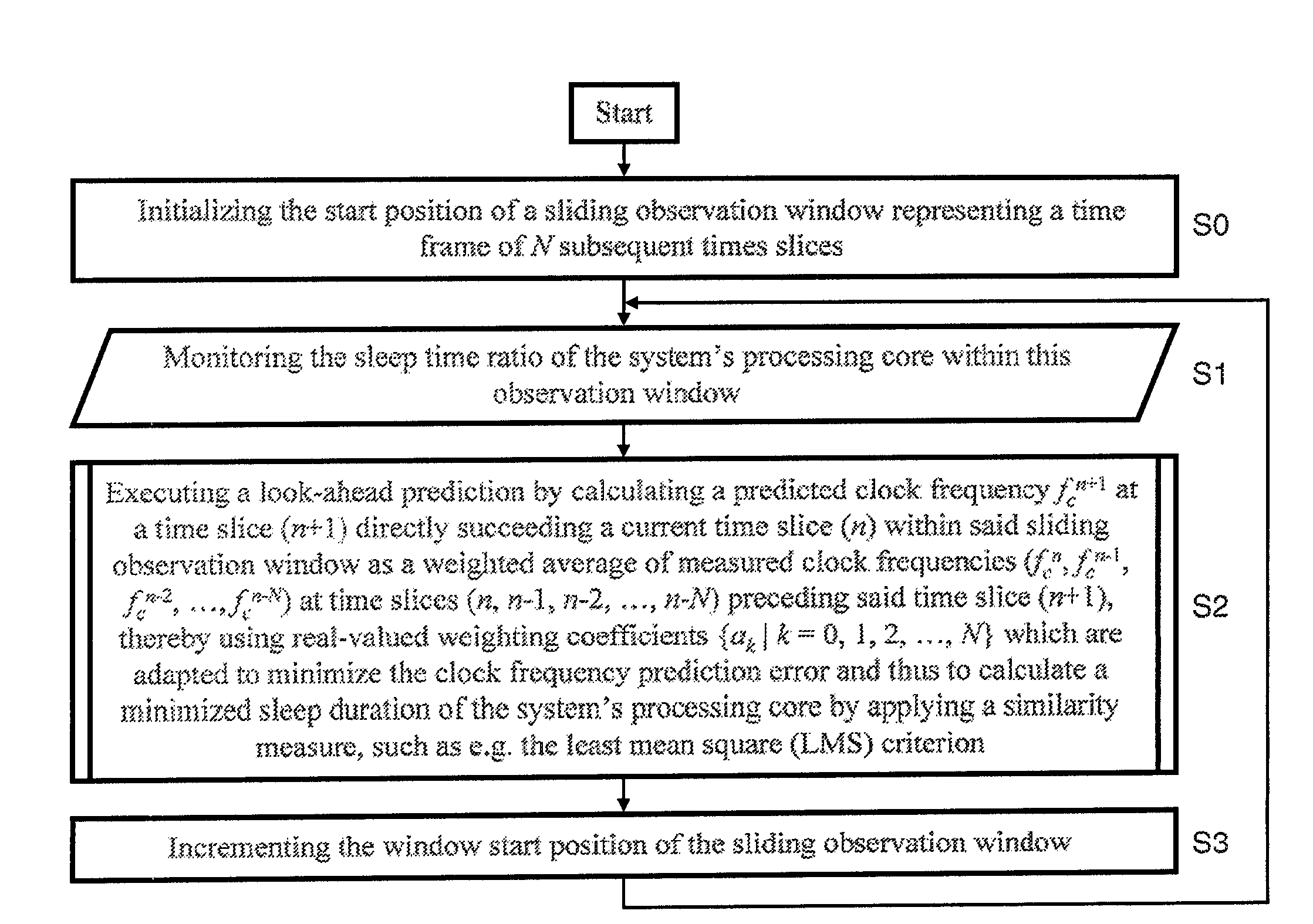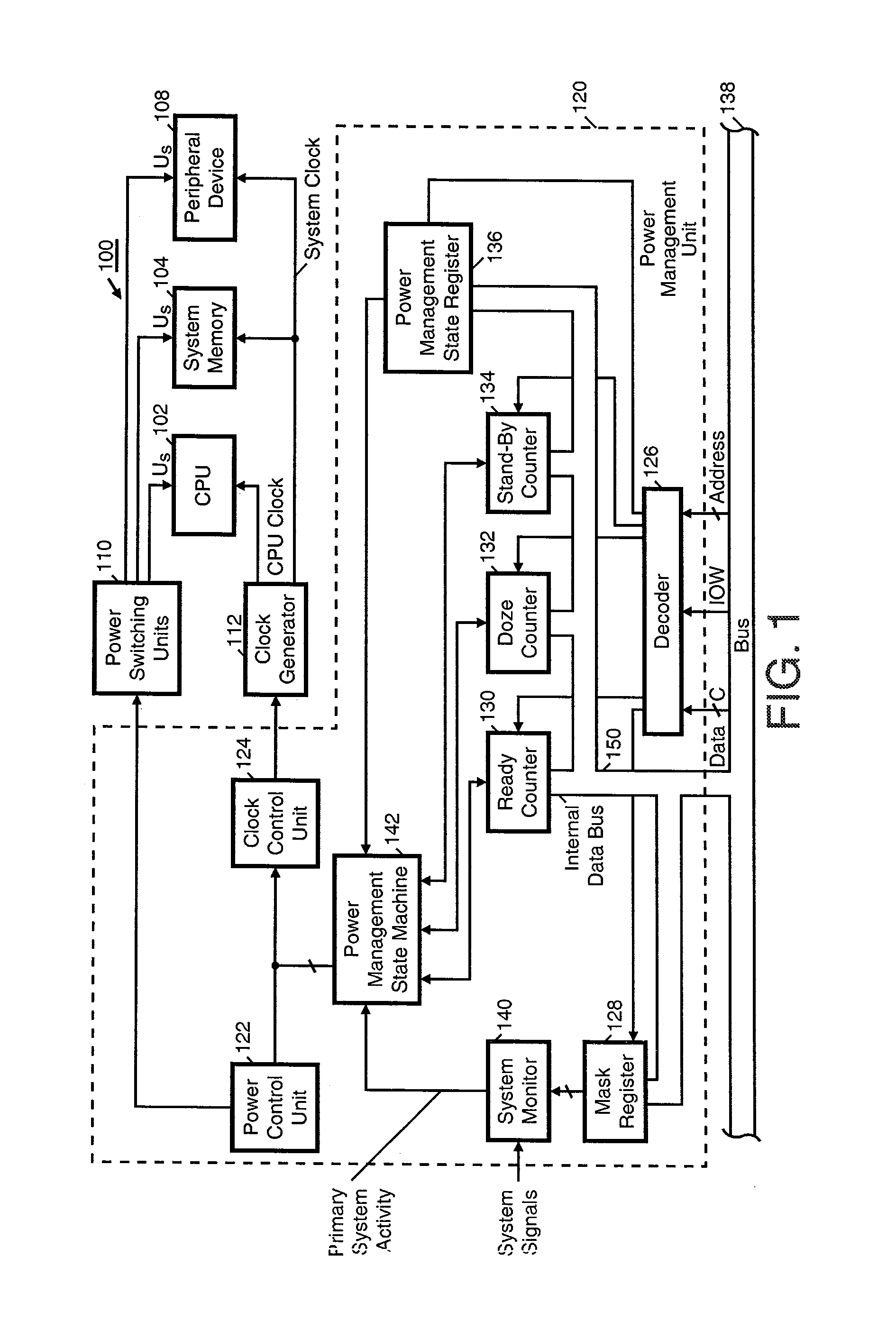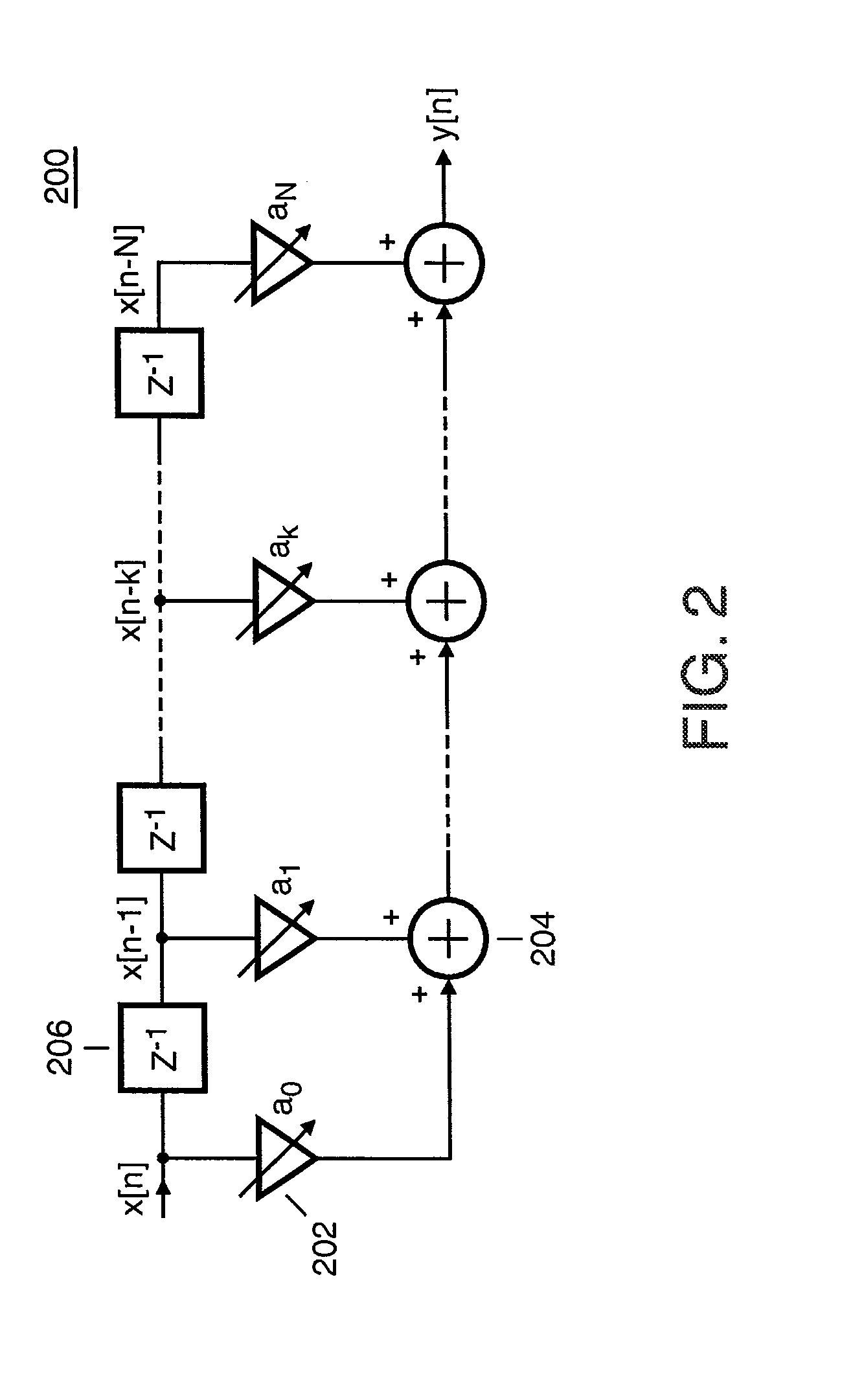[0009]The present disclosure proposes a method for minimizing the power consumption of a complex low-power integrated system's processing core and a non-recursive adaptive filter that is adapted to perform a processor load prediction of a
complex system's processing core so as to minimize its processing
clock frequency and thus being able to reduce power consumption of the entire processing subsystem. Thereby, a power-efficient filter implementation is provided for running the adaptive filter on a
digital signal processor.
[0011]Typically, a
software application has some sort of a main program, a RISC OS Toolkit (RTK)—a class
library for developing RISC OS application programs in C++, which differs from other such libraries currently available for RISC OS in its support for automatic
layout by specifying the relationship between different visual components (for example, the fact that they are arranged in a grid or a column), thus eliminating the need for a template editor and allowing a
layout to change at runtime to accommodate varying content—or at least a simple scheduler that calls tasks and detects idle states, where then the processor
clock can be stalled to save power. But as mentioned below, from power perspective it is more efficient to reduce clock frequency fc to just accomplish tasks just in time rather than run and sleep.
[0015]The adaptive prediction filter mentioned above may e.g., be realized as a linear
finite impulse response filter with (N+1) filter coefficients, wherein said filter provides amplification, summation and
delay elements for calculating a predicted clock frequency fcn+1 at a time slice (n+1) directly succeeding a
current time slice n within said sliding observation window as a weighted average of measured clock frequencies fcn, fcn−1, fcn−2, . . . , fcn−N at a number of time slices (n, n−1, n−2, . . . , n−N) preceding said time slice (n+1), thereby using real-valued weighting coefficients {αk|k=0, 1, 2, . . . , N} which are adapted to minimize the clock frequency prediction error.
[0025]In an embodiment, a software program product's contents causes a processor to control the performance and power consumption of a complex low-power integrated system's processing core by automatically reducing them to a level where outstanding computational operations and software tasks can be performed just in time for further processing when being installed and running on the system, wherein an adaptive prediction filtering
algorithm for predicting (S2) the regularity of the processing core's clock frequency (fc) without requiring information about a scheduled processing load is applied which executes a look-ahead prediction while the
sleep time ratio is monitored (S1) in a sliding observation window for N subsequent time slices. In an embodiment, said adaptive prediction filtering
algorithm is based upon a filtering model using a linear
finite impulse response filter with (N+1) filter coefficients. In an embodiment, the adaptive prediction filtering
algorithm provides amplification, summation and
delay operations for calculating a predicted clock frequency (fcn+1) at a time slice (n+1) directly succeeding a
current time slice (n) within said sliding observation window as a weighted average of measured clock frequencies (fcn, fcn−1, fcn−2, . . . , fcn−N) at time slices (n, n−1, n−2, . . . , n−N) preceding said time slice (n+1), thereby using real-valued weighting coefficients {ak|k=0, 1, 2, . . . , N} which are adapted to minimize the clock frequency prediction error. In an embodiment, the controlling comprises the step of calculating the minimized frequency prediction error and thus calculating a minimized
sleep duration of the processing core by applying a
similarity measure. In an embodiment, said
similarity measure is given by the least
mean square optimization criterion.
 Login to View More
Login to View More  Login to View More
Login to View More 


